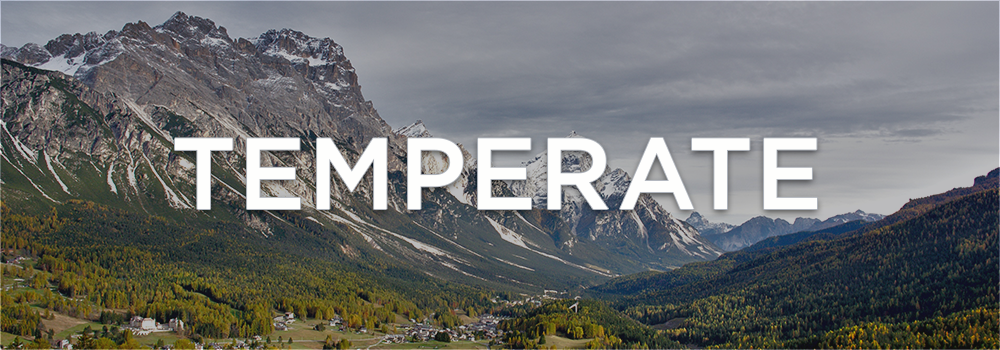A case study showcasing Temperate’s ease of use in Smalltown, U.S.A.
Carol Davis, the Sustainability Manager for the Town of Blacksburg, Virginia, leads a small but mighty department of two which is responsible for sustaining the town for future generations. Carol works closely with colleagues across multiple departments to reduce the environmental impact of municipal operations and plan for long-term sustainability through community initiatives. In a progressive but small town, she fights tirelessly for resources to plan for a sustainable future.
What about the little mountain communities?
In 2015, Blacksburg joined the Global Covenant of Mayors. By signing on, the town was committing to reducing their greenhouse gas emissions and preparing for climate impact. Carol was already tracking emissions (using ICLEI’s Clearpath) and taking steps to reduce the environmental impact of municipal operations; however, the Covenant required that the town
With limited information on how to proceed with a climate vulnerability assessment, Carol’s initial research led her to NOAA’s Climate Resilience Toolkit, which provided extremely useful climate modeling for her region based on high vs. low emissions scenarios. While she had great data to work with, the path forward for translating that into an assessment of overall climate risk relative to community assets, services, and infrastructure was more challenging. She found that most of the work on climate vulnerability and adaptation planning was primarily focused on communities in wildfire and sea level rise zones. And for good reason: those are the communities on the frontlines of climate vulnerability right now. But what about the little mountain communities in Southwest Virginia, 300 miles from the coastline?

Additionally, the models for climate action planning at that point focused on mitigation only, such as reducing greenhouse gas emissions. Adaptation models at the time were not looking at the larger vulnerability and resiliency pieces. A vulnerability assessment was something the people of Blacksburg were pushing for and something that the Covenant of Mayors required. Undaunted, Carol attempted a vulnerability assessment on her own. While she could pull climate models and view important-looking numbers, she realized she had no way to assess which of the anticipated changes to climate posed the greatest risk to her community. She came to realize that she was largely guessing on important questions of vulnerability and risk.
In a larger city with more resources and more topic-area specialists on staff, perhaps, an office of sustainability could weed through the white papers on how to do a climate vulnerability assessment and learn how to do this highly technical process. Or with more resources, the office could pay a consultant — who may not be from the area and does not understand the community at all — with an accompanying large fee to do the assessment for them. Alas, neither of those were viable options for Carol.
This was frustrating, and she thought there had to be an affordable tool that could guide the process in an intuitive and helpful way:
“Honestly, someone needs to get out there and develop TurboTax™ for climate vulnerability assessments.”
Carol gets her wish

Enter Temperate. Carol discovered an application in the works while talking with Michael Steinhoff of ICLEI at the Urban Sustainability Directors Network conference in 2016. Michael let Carol know he was working with Azavea to co-design Temperate and invited Carol to do some very early testing. Her user testing and feedback was critical in Temperate’s early development and resulted in some critical changes. After development was complete, Blacksburg became Temperate’s very first subscriber and continues to be its biggest cheerleader, in Carol’s words. As she suspected, Temperate has proven very useful for the town of Blacksburg:
“It’s a concrete, step-by-step guided process where before it just felt too big and too overwhelming to try and figure out how to do it.”
Thanks to Carol’s feedback, we were able to ensure that Temperate’s interface is intuitive for users. “It’s like they’ve taken something that’s so multilayered and made it stepwise. It’s sort of like you can’t get lost in the weeds.” (For more on this, read our blog on the user-centered design process involved in creating Temperate.) Additionally, Carol noted that she has found the team behind Temperate (which consists of both Azavea and ICLEI staff) to be completely supportive throughout.
From potholes to policy change
Temperate pulls in climate data for virtually every community in the U.S. It’s able to focus in on the hazards and community systems at risk particular to all geographies, not only the towns in sea level rise and wildfire zones. Temperate has allowed the Town of Blacksburg to be compliant with the Covenant of Mayors. They’ve maintained their commitment as a community and are now more confident than ever in their research and planning.
But Temperate has also given the Office of Sustainability a way to talk about climate adaptation planning with the community. Blacksburg is good at reducing greenhouse emissions — that’s an issue people understand. Issues like climate change adaptation, though, don’t get policy priority. It’s difficult to make the case that the community should subtract real dollars from the pothole-filling budget (i.e. the municipal problems that are in people’s faces and impact their lives in ways that are evident) to work on climate adaptation and resiliency.

Temperate helps communities face the reality that even if every single city and town across the world got on board with climate mitigation and zeroing out greenhouse gas emissions tomorrow, we will still see significant consequences of climate change that we cannot reverse at this point. This looks different in different types of communities (coastal vs. landlocked, desert vs tropical, etc.). Communities need to be planning at the hyperlocal level (at-risk infrastructure, public health) and also be thinking about how they will be vulnerable due to the global effects of climate change (population displacement, rising food prices).
For Carol, climate vulnerability and risk is now a part of her general engagement and outreach presentation – something she gives to dozens of student and community groups each year. She can now show them how the region is anticipated to see a 600% increase in high-heat days by the end of the century under a business-as-usual emissions scenario. Temperate helps her make the case to citizens and elected officials alike for “both-and” approaches to climate: both the importance of investing in policies and programs that will reduce community-wide emissions, and the need to create and implement strategies that will protect the built environment, natural systems, businesses, and people in a world increasingly impacted by a changing climate.
Get Temperate for your town
Are you also up to your neck in white paper lingo and Covenant of Mayor requirements? Let us help you find your way.
See how we’ve made creating a custom vulnerability assessment easy, understandable, and affordable. Try Temperate today.
